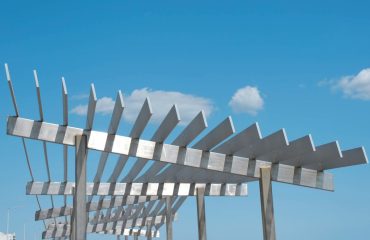Steel, the backbone of modern construction and manufacturing, exists in various forms, each with unique properties and applications. Understanding the differences between raw and finished steel is crucial for anyone working with this versatile material. This comprehensive guide will delve into the key distinctions, helping you choose the right steel for your specific needs.
1. The Birth of Steel: Understanding Raw Steel Production
Raw steel, also known as pig iron or crude steel, is the initial product of the steelmaking process. It’s not ready for use in its raw form. The primary production method involves a blast furnace, where iron ore, coke (a fuel source), and limestone (a flux) are heated to extremely high temperatures. This process reduces the iron ore to molten pig iron, which contains significant impurities like carbon, manganese, silicon, phosphorus, and sulfur. These impurities significantly affect the steel’s final properties, making it brittle, weak, and unsuitable for most applications. The resulting raw steel is typically cast into ingots or continuous slabs, ready for further processing.
The composition of raw steel is highly variable depending on the ore used and the smelting process. It’s crucial to note that raw steel is far from the final product. Its high carbon content makes it extremely hard but also very brittle and prone to cracking. It requires further refining to become usable.
2. Refining the Beast: The Transformation to Finished Steel
The journey from raw steel to finished steel involves several crucial refining processes aimed at removing impurities and adjusting the chemical composition. These processes, often involving oxygen furnaces and electric arc furnaces, precisely control the carbon content and introduce alloying elements like chromium, nickel, molybdenum, and vanadium to enhance specific properties. The most common refining processes include:
- Basic Oxygen Furnace (BOF): This process uses oxygen to burn off impurities, significantly reducing carbon content and improving steel quality.
- Electric Arc Furnace (EAF): This process uses electric arcs to melt scrap steel and add alloying elements for precise control over the final composition.
After refining, the steel undergoes further processing to achieve the desired shape and properties. This might involve casting, rolling, forging, or drawing, depending on the final application.
3. A Tale of Two Strengths: Comparing Mechanical Properties
The most significant difference between raw and finished steel lies in their mechanical properties. Raw steel, due to its high impurity levels, is significantly weaker and less ductile than finished steel. Finished steel, on the other hand, boasts enhanced tensile strength, yield strength, and ductility, making it suitable for a wide range of structural and engineering applications. The precise mechanical properties of finished steel are carefully controlled through the refining and alloying processes, allowing manufacturers to tailor the material to specific requirements. For instance, high-strength low-alloy (HSLA) steels are designed for superior strength and weldability, while stainless steels offer excellent corrosion resistance.
4. Cost and Application: Weighing the Practical Implications
The cost difference between raw and finished steel is substantial. Raw steel, being an intermediate product, is significantly cheaper than finished steel. However, this low cost comes at the expense of usability. The cost of refining, processing, and shaping raw steel into finished products adds considerably to the final price. The choice between raw and finished steel depends heavily on the intended application. Raw steel is rarely used directly in construction or manufacturing; instead, it serves as the raw material for producing finished steel products. Finished steel, with its superior properties, is used in a vast array of applications, from skyscrapers and bridges to automobiles and appliances.
5. Surface Finish and Aesthetics: The Finishing Touches
While raw steel has a rough, uneven surface, finished steel can undergo various surface treatments to achieve specific aesthetics and enhance its properties. These treatments can include:
- Hot-dip galvanizing: Provides a protective zinc coating to resist corrosion.
- Painting or powder coating: Offers aesthetic appeal and additional corrosion protection.
- Polishing or grinding: Creates a smooth, shiny surface for decorative applications.
These finishing processes significantly enhance the durability and appearance of finished steel, making it suitable for a broader range of applications, including those where aesthetics are a primary concern.
In conclusion, the differences between raw and finished steel are vast and crucial to understand. While raw steel forms the foundation of the steel industry, it’s the carefully controlled refining and processing of finished steel that unlocks its remarkable versatility and strength, making it an indispensable material in our modern world.
Tags: raw steel, finished steel, steel comparison, steel properties, steel manufacturing




